Discovering Gems Down Mexico Way
Our friends Vivienne and Irwin kept raving about San Miguel de Allende. Located in the central highlands of Mexico, San Miguel is a Unesco World Heritage Site and an art and cultural center. If you are looking for a beach resort, you are in the wrong place. Viv and Irwin had been wintering in San Miguel for years. So in February 2000 Lenore, my bw (beautiful wife) and I joined them. We took the plunge and booked a casita for the entire month. It was on the grounds of a picturesque hacienda with our own private garden, maid service, cleaning and laundry. The owners were very hospitable, she a Californian and he a Mexican. It was the beginning of spring, cool mornings, warm middays, and cool evenings. The hacienda was high up on a hill overlooking the center of town. Walking down was easy, but walking up was tiring, or we could take a taxi for a few pesos. Viv and Irwin lived in an apartment close to the center. They were our guides and introduced us to their interesting friends who also kept coming back year after year.
At the center of San Miguel is El Jardin a neatly landscaped park with a gazebo in the middle. The mariachis are out in force Saturday evening and a dance band plays in the gazebo, the crowd dances and sings. Some, with wine in hand, follow guitar players roaming around the Jardin. During the week we would walk through the square a number of times a day, on our way to surrounding retail shops, food shopping, museums, galleries, and restaurants. Often we would just take it easy, sit on a bench and watch the locals, the tourists, and the native Indians go by. Sometimes we just happened to sit next to someone with a pad, sketching one of the many beautiful fountains or colorful buildings, or an artist, brush in hand, painting the fairy tale-like church Parroquia de San Miguel across the street. To our surprise one day we saw two couples, new arrivals, walking through the Jardin, speaking Hebrew.
In the center of town in a landmark building is Casa Cohen, a metalworking shop where one can buy a chanukiyah or a mezuza. Above the entrance is a huge Magen David and a frieze re Noah's ark. The building is owned by Sephardics, originally from Guadalajara. Right off the Jardin, we would meander through the enchanting side streets filled with shops selling local textiles, handmade silver jewelry, handicrafts clothing, and restaurants. The Mercado San Juan de Dios is a short walk from El Jardin. Some mornings we would go and buy fresh produce from the Indians and talk to the interesting shopkeepers. On Tuesdays we sometimes took one of the rickety buses to the massive outdoor market Tianguis de los Martes on the outskirts of town. They have everything one can think of.
I enrolled in a class to make silver jewelry. Others in our circle of friends worked with stained glass or tin, some painted, one sketched in charcoal. The bw signed up for Spanish conversation and a class in short story writing. We joined a short story discussion group that met once a week. Once a week the group went by bus outside of town to La Gruta Spa ... three warm spring pools, which end in a tunnel that opens up to a large cave where people line up and wait to be bombarded by cascading water. Then back out to pool three, where you sun and drink a cold Pina Colada or Bloody Mary. When the time came to get out of the pool, we would go to our locker, dry off and change into street clothes. We would lunch on the lawn or on picnic tables. Most other days the group eats comida/lunch out of doors at one of the many restaurants in town. Between the eating, drinking pitchers of Sangria, conversation, listening to musicians serenading us, comida can last for three hours, then it is siesta time. If one has the energy, afterwards there are lectures, theater, movies, known authors discussing their books, concerts. On those days dinner is usually soup and sandwich, or a full dinner and a show instead.
Every Saturday some of us attended a chavera service. Every Sunday between 10am and noon there are house tours of the rich and the near famous. Buses leave from the library, and while waiting for a bus one is entertained by a Mariachi band. This charming cobblestone city attracted many beat generation artists and writers in the 1960s, such as Neal Cassady and Jack Kerouac. Today it attracts the retirees like the bw and me.
On another trip some of us went to the Diego Rivera house and museum in nearby Guanajuato. Born Diego Maria de la Concepcion Juan Nepomuceno Estanistao de la Rivera y Barrientos Acosta y Rodriguez (that's a tongue twister), this illustrious Mexican painter, muralist and active communist was famous for giving expression to works of social content in public buildings around the country and in the United States. On display in the museum are his portraits, landscapes, nudes, still life and mural sketches.
All this was enough to convince us to sign up for the following February. This second time around we ventured farther away from San Miguel to Bernal, Queretaro and Xilitla. We went to Bernal ostensibly to buy gemstones to go with the silver jewelry I continued to make. It was getting chilly so the bw bought a hand woven wool serape/shawl. And as tourists do, we also bought a silk-screened photo of La Pena for the grandchildren. We had lunch at a cafe near the foot of La Pena, the world's third largest monolithic rock. It is exceeded in height only by Gibraltar and Sugarloaf Mountain in Brazil. In Queretaro, a university town, we were greeted by a surrealist metal sculpture by Leonora Carrington. In the evening we went to the concert hall to hear the Queretaro Philharmonic play a program of classical music.
We had heard about Las Pozas and went to the tourist office in San Miguel to check it out. There we met Oswaldo, a guide who was a maven about the Sierra Gorda reserve and Xilitla. Another couple, the Millers, and Oswaldo's wife joined us for the trip. We all piled into Oswaldo's VW van and off we went. Leaving the cactus and mesquite landscape behind, we passed through a variety of altitudes and ecosystems, through pine forests, live oak forests, a mountain cloud forest, desert, and a tropical rain forest and jungle filled with banana trees and wildlife. Located close by is the town of Xilitla and the charming guest house El Castillo. The most impressive attraction in the area are the pools and the surrealistic sculpture garden built by the eccentric English millionaire, Edward James.
Stopping periodically, the trip took us eight hours. One interesting stop was at a freshwater stream and a walk to its source ... a beautiful waterfall. Another stop was a red clay open area where we found a few fossils, mostly seashells. En route Oswaldo told stories about his family and the history of San Miguel. His father was from Spain, a marrano. His wife was descended from one of the ladies in waiting brought to Mexico in the mid-1800s to attend the Empress Carlota. She, a relative of Queen Victoria, was married to Maximillian, archduke of Austria, appointed emperor of Mexico by Napoleon.
We had room reservations at El Castillo, the former home of Edward James. The walls were decorated with paintings by his friends, Dali, Picasso, and Leonora Carrington, whom he commissioned to paint frescos for his surrealist house. He supported them as well as the artists Stravinsky and Magritte. Just a short walk from El Castillo, James built Las Pozas. Over a 20-year period, more than 36 surrealistic sculptures were built in concrete on the 80 acres of gardens, with waterfalls and natural pools, including "a staircase to nowhere" and, "the path of the seven deadly sins." Cages for exotic animals, towers, pagodas, fountains, arches and tunnels, precipitous walkways and multi-story birdcages - it seemed endless.
Years three and four, the bw and I moved to another side of San Miguel to a two story boveda ceiling house, also up a steep hill. Guess who our neighbor was ... Oswaldo. There were new things to see and to do. Irwin and I switched from silver jewelry to working with stained glass. We both made a praying mantis which we hung on the living room wall of our respective apartments back home. We added Balkan folk dancing to our list of activities. Played bridge. Our group attended a Shabbaton weekend. Jews from as far away as Mexico City participated. Lots of eating out. Making new friends. Nice memories.
What to do the next year? Lenore and I decided to change our destination ...
from San Miguel to Israel.



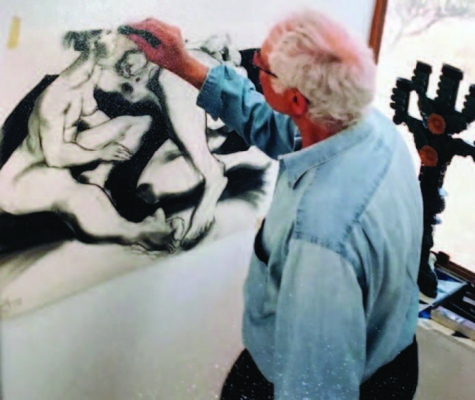
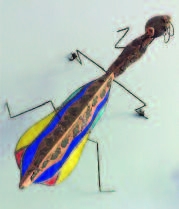
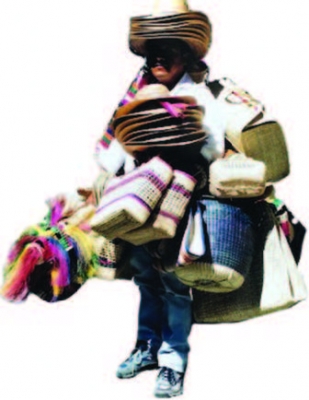
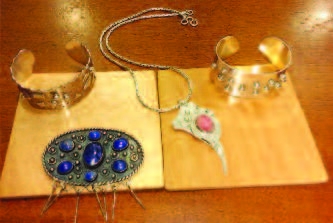
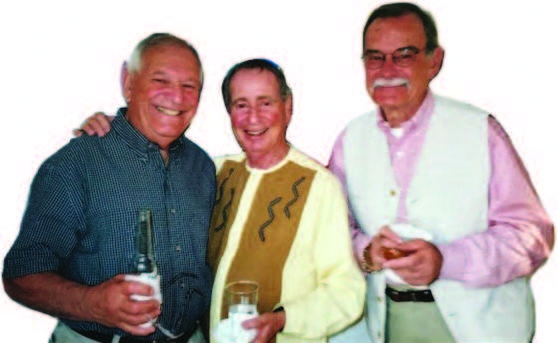




Comments